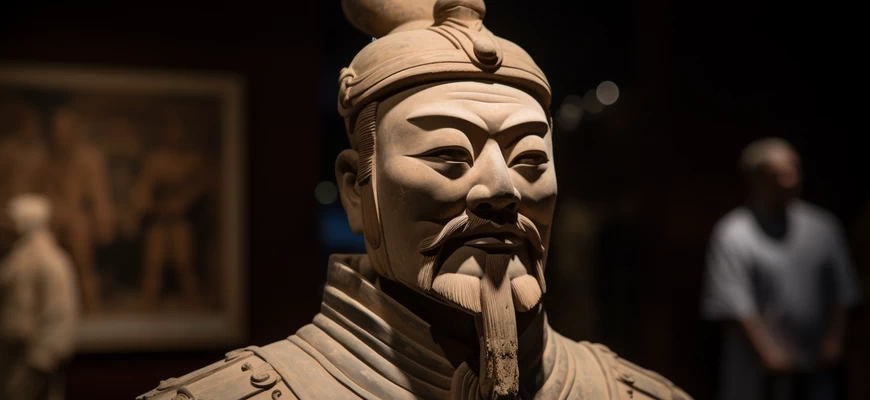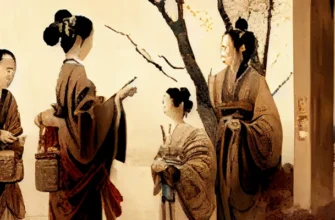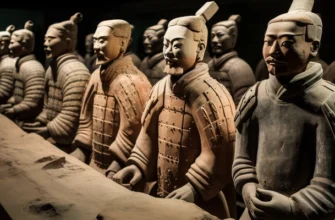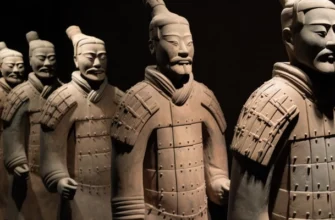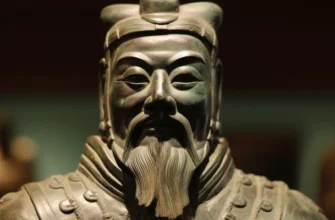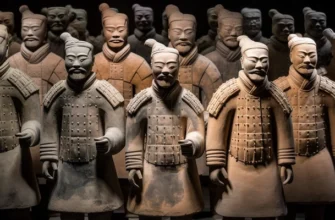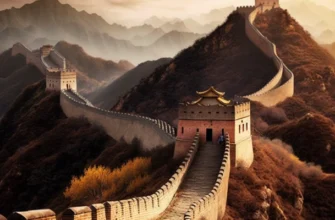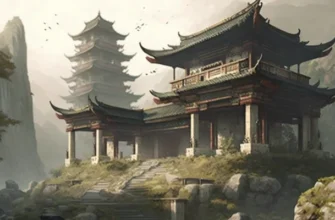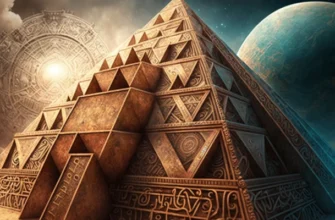The Han Dynasty was a defining period of Chinese history (206 BC – 220 AD). It is divided into Western and Eastern dynasties that introduced new religions, technologies, and social reforms. The Western Han Dynasty lasted until 9 AD and played an important role in the development of Chinese culture and economy. The Eastern Han Dynasty began in 25 AD and continued to develop until 220 AD. Culture and art, social structure, and trade development were important aspects of the Han Dynasty. It left a significant impact on Chinese and world history.
- Western Han Dynasty (206 BC – 9 AD)
- Description of the creation of the dynasty and its development
- The most famous emperors and their achievements
- Eastern Han Dynasty (25 AD – 220 AD)
- Description of the creation of the dynasty and its development
- The most famous emperors and their achievements
- Culture and art
- Sculpture and architecture
- Society and economy
- Development of trade and crafts
- The emergence of money and banking
- Conclusions
Western Han Dynasty (206 BC – 9 AD)
The Western Han Dynasty lasted from 206 BC to 9 AD and played an important role in the development of Chinese culture and economy. Its founder was Liu Bang, who implemented a number of reforms to improve the efficiency of public administration and strengthen the power of the central state. The most famous emperor of this dynasty was Wu Tie, who ruled the country from 141 B.C. to 87 B.C. He introduced a number of innovations, including a state monopoly on the production and trade of iron and salt, which contributed to the development of the economy. Culture and art, including fiction, painting, sculpture, and architecture, were also developed during this period. The Western Han Dynasty was the first state in Chinese history to ensure the country’s stability and prosperity for a long time.
Description of the creation of the dynasty and its development
The Han Dynasty was founded by Liu Bang in 206 BC after the overthrow of the Qin Dynasty. Liu Bang was considered one of the most prominent rulers in Chinese history and implemented a number of reforms aimed at strengthening centralized power and ensuring effective public administration. The most famous emperor of the Western Han Dynasty was Wu Tie, who ruled the country from 141 B.C. to 87 B.C. He introduced a number of innovations, including a state monopoly on the production and trade of iron and salt, which contributed to the development of the economy. Culture and art, including fiction, painting, sculpture, and architecture, were also developed during this period. The Western Han Dynasty became the first state in Chinese history to ensure the country’s stability and prosperity for a long time. However, in 9 AD, the Han Dynasty was overthrown by an uprising that led to the division of the country into three separate states.
The most famous emperors and their achievements
The Han Dynasty was the largest and longest dynasty in Chinese history. Among the most famous emperors of this dynasty are Wu Tie, Han Wu Di, and Han Wu Qi. Wu Tie was the most famous emperor of the Western Han Dynasty, who introduced a system of state monopolies on the production and trade of iron and salt, which contributed to the development of the economy. Han Wu Di, who ruled the country from 141 BC to 87 BC, implemented a number of important reforms, including providing greater freedom for peasants and raising their status in society. Han Wu Qi, who reigned from 25 BCE to 57 CE, founded the magnificent capital city of Luoyang and pursued an open and enlightened policy, supporting science, art, and literature. All these emperors made a significant contribution to the development of China and are recognized as leaders of their time.
Eastern Han Dynasty (25 AD – 220 AD)
The Eastern Han Dynasty was founded in 25 CE after the collapse of the Western Han Dynasty. This dynasty operated on the territory of China for 195 years, from 25 A.D. to 220 A.D. It is known that it consisted of two periods: the first – the Southern Han (25-220 A.D.) and the second – the triumphant Dong Han (25-220 A.D.). During the Southern Han, significant reforms were initiated, including a ban on Confucian rituals of open expression, allowing other religions to develop. The Dong Han was the most successful period of the dynasty, covering a large part of China, and contributed to the development of science, art, and technology. However, in 220 AD, the dynasty split into three states due to internal conflicts and invasions by eastern nations.
Description of the creation of the dynasty and its development
The Eastern Han Dynasty was created after the fall of the Western Han Dynasty in 25 A.D. Power was seized by military leaders from the East of China, who united to restore stability to the country and assert their power.
The first emperor of the Eastern Han Dynasty, Guang Wu, established his capital in Luoyang and began to implement reforms aimed at improving the situation in the country. He lowered taxes, forbade monarchs and friends of the government to take land from the people, and reduced the influence of dynastic clans on the government. Guang Wu also strengthened the military power of the state, which allowed it to expand to the southwest.
At the beginning of the Han Dynasty, many Eastern administrative reforms were carried out, including the creation of a centralized bureaucracy, with scribes who were given great power. They were civil servants and had a lot of power in the administration of the state. An imperial university was also established, where young people were educated, who then held positions in the government.
The Eastern Han Dynasty was able to expand to the southwest and reached as far as Vietnam and Korea. It also established diplomatic relations with the Roman Empire and other countries in Central and Southeast Asia.
Throughout its existence, the Eastern Han Dynasty experienced internal conflicts and uprisings, but retained its power. In 184 AD, a terrible insurgency called the Yellow Turkish Rebellion occurred, which led to the deaths of millions of people and the fall of the Han Dynasty.
During the Han Dynasty, culture, science, and art flourished. Huge buildings such as the Public House, mansions, roads, canals, and infrastructure were created to facilitate the development of culture and economy. Paper and the compass were invented, greatly improving the standard of living. Chinese calligraphy, music, painting, and ceramics were also very popular in the Han period.
In general, the Han Dynasty became one of the most significant and influential dynasties in the history of China and the world. It left a significant mark in culture, science, and art. Its achievements in diplomacy and expansion in East and Southeast Asia were also recognized as significant and influential.
The most famous emperors and their achievements
The Eastern Han Dynasty (25 CE – 220 CE) had many famous emperors, each with their own achievements and contributions to the development of the state. Here are some of the most famous:
Liu Bang (256 BC – 195 BC), also known as Emperor Gao-tsu. He became the first emperor of the Eastern Han Dynasty and went down in history as the founder of the dynasty. He also made important reforms to the country’s governance and economic development, and established a standard system of weights and measures.
Wu Ti (156 BC – 87 BC), known as Emperor Wu. He realized significant economic development of the country and made significant achievements in science and technology. He also established the Imperial Academy, which became an important center of science and culture in China.
Han Wudi (156 B.C. – 74 B.C.), known as Emperor W. He introduced significant social and political reforms, including banning the sale of land and easing taxes for farmers. He also expanded the country’s borders, making significant conquests in the north and western border.
Han Wuandi (156 BC – 87 BC), known as Emperor Wan. He carried out significant economic and political reforms, including establishing a state monopoly on iron and salt, which promoted the development of industry and trade. He also made important social and cultural reforms.
Han Wuding (156 BC – 33 BC), known as the Wu Emperor. He made significant achievements in the political and economic spheres. He founded an imperial school to train future government officials and opened public libraries. He also made significant reforms in the financial and tax systems.
Han Qingdi (188 BC – 141 BC), known as the Qing Emperor. He made great contributions to the development of culture and art, including establishing censorship and supporting literature and other arts. He also made significant reforms in governance and finance.
Han Wuli (156 BC – 87 BC), known as Emperor Wu. He made significant achievements in the military sphere, including conquering new territories and strengthening borders. He also made important economic and social reforms that contributed to the country’s development.
Han Ming (27 BC – 75 AD), known as the Ming Emperor. He made significant achievements in the development of science and technology, in particular, he supported inventions and developments in medicine and astronomy. He also implemented significant reforms in governance and finance.
Culture and art
The Han Dynasty (206 BC – 220 AD) is one of the most important dynasties in Chinese history, which played a significant role in the development of Chinese culture and art during its more than four centuries of rule.
During the Han Dynasty, there were significant changes in the cultural life of China. A huge number of literary works were created, including historical records, philosophical treatises, and poetry. The Chinese language was also standardized and systematized during the Han Dynasty.
New styles and techniques were developed in Han Dynasty art. One of the most famous styles is the artistic style of “natural realism,” which emphasized the beauty of nature and the life of the people. New painting techniques such as dry brush and wet brush were also developed.
All of these achievements in Han Dynasty culture and art became important building blocks of Chinese culture, which continues to evolve to this day.
Sculpture and architecture
The sculpture and architecture of the Han Dynasty were characterized by a wide variety of styles and techniques. In particular, in the first half of the Han Dynasty, many monumental sculptures in bronze and stone were created, depicting emperors and important personalities.
One of the most famous examples of sculpture from this period is the Bronze Horse, created in the second century AD. The image of a horse that looks very realistic is a marvel of technology and art.
In the second half of the Han Dynasty, architecture became more complex and monumental. Many palaces, monasteries and imperial mausoleums were built. One of the most famous mausoleums is the Han Shihuangdi Mausoleum, which was built in the 140s AD.
The architecture of the Han Dynasty also used many new technologies, such as concrete, masonry, and wooden construction with a bracket system, which allowed for the creation of complex and monumental structures.
In general, Han Dynasty sculpture and architecture played an important role in the development of Chinese culture and left a deep mark on Chinese history and art.
Society and economy
The Han Dynasty was one of the most influential and successful periods in Chinese history. The society and economy of this period were characterized by great diversity and development.
During the Han Dynasty, a centralized state with a stable system of governance was created, which allowed for economic and cultural development. Also, a system of minting money was introduced, which facilitated the development of trade and exchange of goods.
The economy of the Han Dynasty was based on agriculture and crafts. Rice was the main crop, but cotton, hemp, soybeans, and other crops were also grown. Handicrafts were also developed, including the production of ceramics, bronze, silk, and other goods.
To ensure economic development, the Han Dynasty actively used trade. Maritime and intra-Chinese trade was developed, which ensured the exchange of various goods, such as silk, bronze products, ceramics, tea, and others.
The Han Dynasty society was divided into different social strata, such as the imperial dynasty, officials, merchants, and peasants. At the same time, conditions were created for social mobility, which allowed peasants and artisans to rise in social status.
In general, the Han Dynasty was a period of significant economic, cultural and social development in China, which left a significant impact on the further development of Chinese civilization. One of the key aspects of the Han Dynasty’s success was its ability to govern a large country and ensure its stability. This was achieved through a developed system of governance, which included a hierarchy of officials and a system of examinations that ensured the selection of qualified candidates for positions in the state.
The Han Dynasty was also a period of significant cultural development. Significant works of Chinese literature were created during this period, such as the Shui Jing, the Jin Shu, the Zhou Li, the Tao Te Ching, and others. Also, traditions of music, dance, and other arts developed. In sculpture and architecture, significant works were created, such as the Buddha statues in the Mogao Grottoes and others.
The Chinese people during the Han Dynasty also made significant achievements in science and technology. New methods of silk processing were developed, paper and printing were invented, iron ore mining was developed, and the compass was invented.
In summary, the Han Dynasty was a period of significant development and success in Chinese history that left a great impact on the country’s culture, economy, and society. This period played an important role in the formation of Chinese civilization and contributed to the development of science, technology, art and other areas of human activity.
Development of trade and crafts
The Han Dynasty was a period of significant development of trade and crafts in China. During this period, many new routes of communication were created, such as the Silk Road, which facilitated the development of trade between China and other countries.
Trade was a significant source of income for the state and also facilitated the exchange of cultural and technological achievements between different nations. Chinese goods, such as silk, tea, porcelain, bronze products, and others, were very well known and respected in other countries.
The development of crafts was also very important during the Han Dynasty. Craftsmen were engaged in the production of various goods, including ceramics, textiles, bronzes, and others. Crafts were an important source of employment for many people at that time and also contributed to the development of trade, as it was necessary to transport the goods produced to other regions.
As a result, the development of trade and crafts during the Han Dynasty was an important factor in China’s economic development and contributed to the exchange of cultural and technological achievements between different nations.
The emergence of money and banking
The Han Dynasty was a ruling dynasty in China that existed from 206 B.C. to 220 A.D. During the Han Dynasty, China saw important changes in the field of money circulation and banking.
First, a new monetary unit, paper money, was introduced during this period. This was made possible by the Chinese invention of paper in 105 A.D. Thus, China had a new means of exchanging and storing wealth, which replaced old methods such as trading in products or metals.
Secondly, during the Han Dynasty, the first state-owned banks were established, such as Tai Fu, Hai Fu, and Huang Chen, which were engaged in money storage, lending, and currency exchange.
These changes contributed to the development of trade, increased the volume of financial transactions, and improved living standards. Over time, the ideas of paper money and banking spread to other countries and regions of the world, laying the groundwork for the modern global financial system.
Conclusions
The Han Dynasty was of great importance to the modern world, as it created the ideas and principles that later became the foundation of the financial system. During the Han Dynasty, paper money was introduced into circulation, and the first state-owned banks were established. These changes contributed to the development of trade and the improvement of living standards.
The achievements of the Han Dynasty in the field of monetary circulation and banking became an important stage in the development of the global economy and finance. Nowadays, paper money is used all over the world, and banking institutions are important parts of the economy.
Thus, the achievements of the Han Dynasty in the field of monetary circulation and banking are of great importance to the modern world. They became the foundation of the financial system and contributed to the development of the economy and the improvement of people’s living standards.
